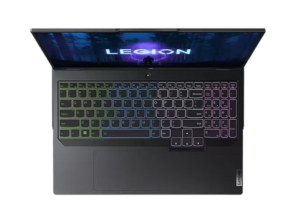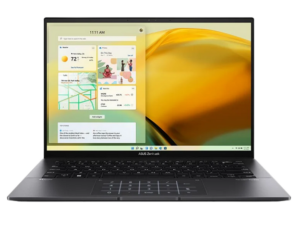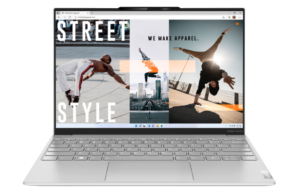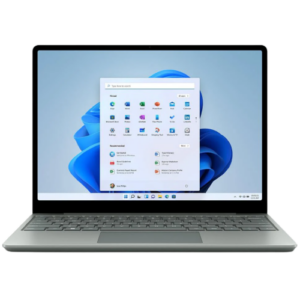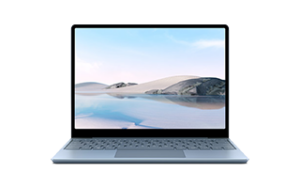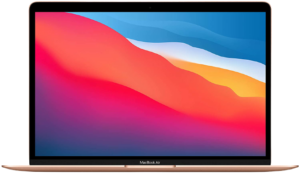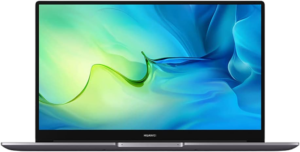Lenovo's Legion Pro 5i isn't cheap but it's got a crowd-pleasing combination of refined design and upgraded specs.
Lenovo Legion Pro 5i (2024) review: Cool factor
Last year's Lenovo Legion Pro 5i was a shoo-in for our favourite gaming laptop of the year. It was a sleek refinement of a familiar design that didn't compromise when it came to specs and avoided any major pitfalls when it comes to performance. Gaming laptops don't change that much from year to year, so it's no huge surprise that this year's model inherits most of those strengths.
That said, the new Legion Pro 5i is one of the more modest options within the context of Lenovo's refreshed gaming lineup. While it features the same Intel Core processors as the Legion Pro 7i and Legion Pro 9i, it doesn't offer as much onboard storage or graphical grunt.
In practice, these shortcomings don't feel like that much of a hangup. You're still getting the benefits of Lenovo's new Coldfront Hyper thermal tech plus hardware capable of delivering a blisteringly smooth and consistent experience for all but the most demanding gaming experiences.

How much does Lenovo Legion Pro 5i cost in Australia?
The Lenovo Legion Pro 5i (Gen 9) in Australia starts at around $3499 for the base model. Unless you're cashing in on a decent EOFY deal, the price here is a fairly steep one that's roughly in line with other gaming laptops of its calibre.
At the time of writing, there are three other versions of the ninth-generation Legion Pro 5i available. These start at an RRP of around $3699 and go up to $4459. Some of these alternative configurations include more storage, others offer an upgrade to a better processor or graphics card.
If you're looking to get thrifty with it and lock in the best bargain that Australia's retailers offer when it comes to the new Lenovo Legion Pro 5i, check out the table below.
Before you make a decision, be sure to read our recommendation for the specs.
Lenovo Legion Pro 5i - Design and features

If you buy a brand-new version of this product, the box will include the following:
- The Lenovo Legion Pro 5i
- Power brick and AC adapter
Lenovo have stuck to what they know with the new Legion Pro 5i. Like last year's model, the gaming laptop boasts a sleek book-like design with a matte-black finish plus all the usual RGB lighting. It's a little bottom-heavy, but that's not necessarily without a silver lining or two. You can flick the lip of the machine open with a simple gesture and a single finger in the same way that you might one of Apple's MacBooks.
The display on the Legion Pro 5i is not OLED, but that's pretty much the only thing to grumble about. Regardless of what components you opt to pay for on the inside of the machine, you'll walk away with a 16-inch WQXGA IPS screen clocked at a 240Hz refresh rate. Given both the size and specs involved, it is far from a surprise that this display panel proved itself to be a vivid canvas for both low-fidelity indie titles like Nightmare Kart and more demanding experiences like Cyberpunk 2077 and Warhammer 40,000: Dark Tide.
It's a similar story when it comes to the speakers on the Legion Pro 5i. Chances are, if you're using a laptop like this to play games on the go or in the comfort of your own home, you're probably going to be wearing a set of headphones while you do so. In the event that you aren't, the 2W stereo speakers here aren't complicated but they are loud enough to pick up the slack. Even if they aren't exactly going to fill a space with sound in the way that a dedicated wireless or Bluetooth speaker might, they're more than loud enough to eclipse the sound of the fans inside the Legion Pro 5i.
Even if what's here isn't radically different, there's coherence and confidence on display that makes this year's Legion Pro 5i a delight to use. The glass trackpad is larger than usual and oriented towards the leftmost half of the layout. Meanwhile, the keys aren't just lit like those you'd find on a desktop PC, they're also comparable in clickiness courtesy of Lenovo's TrueStrike switches.
Flipping things around, the back of the Legion Pro 5i is where you'll find most of its ports. There's an ethernet slot, a single HDMI 2.1 port, a pair of USB-A 3.2 Gen 1 ports, one USB-C port (3.2 Gen 2) that supports up to 140W power delivery plus the dedicated charging slot. There's an extra USB-C (3.2 Gen 2) port and USB-A port on the left, plus one final one on the right. I really like how this layout keeps the heavy-duty cabling out of sight and out of mind.
On the inside, this year's Legion Pro 5i (and the Legion Pro 7i) feature a central hyperbaric chamber. This inclusion allows the laptop to achieve more optimal heat exchange by keeping hot and cold air apart. The end result of this thermodynamic feat is that the processor inside the Legion Pro 5i can eke out an extra 25W of power while operating at a lower temperature and reducing its fan noise relative to its 2023 counterpart.
Even if this aspect of the design is largely invisible to the majority of potential users most of the time, it's definitely to keep in mind if you're sizing the Legion Pro 5i up against its competitors.
Storage: The baseline model comes with 512GB. This can be upgraded.
Memory: The baseline model comes with 16GB. This can be upgraded.
Lenovo Legion Pro 5i - Performance and battery life

Under the hood, the base version of the Lenovo Legion Pro 5i is kitted out with Intel's Core i7-14650HX Processor processor, 16GB of DDR5 RAM, 512GB of M.2 SSD storage and an Nvidia GeForce RTX 4060. The most expensive model ups the ante to an Intel Core i9-14900HX, 32GB of RAM, 1TB of storage and an RTX 4070.
There's also an 80Wh battery, which is fairly close to the legal limit for laptops that you can take on a plane (though not as close as some). While I think there is a case to be made that some of the cheaper configurations walk the line between the top-end of the Enthusiast category, the reality is that most Legion Pro 5i configurations operate in Extreme territory.
Essential processors should be able to handle the basics: email, social media and some light web browsing. Gaming or more advanced tasks like image and video editing are likely off the table.
Everyday processors should be able to confidently meet basic performance requirements for most people. Email, social media and web browsing shouldn’t be a hassle, and while they aren’t able to handle graphically-demanding AAA releases, they should be able to run some indie or casual games. This is typically where Chromebooks top out.
Enthusiast processors should be able to easily exceed the minimum requirements of most users and be powerful enough to handle some AAA gaming, though not at the highest fidelity. That usually excludes most ARM processors.
Extreme processors should be able to do anything you can think of. Games should run at high frame rates on the highest possible settings, and multitasking shouldn’t be limited in any significant way.
When it came to both benchmarks, the Lenovo Legion Pro 5i largely delivered on the expectations that come with that designation. In terms of raw scores, Lenovo's latest outpaced the Acer Predator Helios 3D when it came to CPU but was held back by the 4060 inside it when it came to GPU scores.
Of course, those numbers rarely tell the whole story. When it came to playing games on the Legion Pro 5i, the hardware held up its end of the bargain with smooth framerates and a notable lack of heating issues. What's more, the usual caveat applies here. If you aren't connected to a power supply, you'll see a significant drop in frames per second and in the performance of the unit as a whole.
You'll also be forced to reckon with the short battery life on offer. It took just 1 hour and 52 minutes of video streaming to run the battery in the Legion Pro 5i down from 100% to zero. The machine's on-the-go gaming performance wasn't that much better, with just 39 minutes of Cyberpunk 2077 being enough to drain the entire charge. That sounds bad at first blush but it's almost ten minutes worse than its predecessor. If battery life does matter to you, then you might be better served by a gaming handheld like the Steam Deck.
There are few things more annoying than buying a brand new laptop and discovering it has a bunch of annoying bloatware installed out of the box. Here's what the software situation for the Lenovo Legion Pro 5i looks like once you've set it up for the first time.
- Dolby Vision
- GeForce Experience
- Legion Arena
- Lenovo HotKeys
- Lenovo Now
- Lenovo Vantage
- McAfee
- Nahimic
- Nahimic Companion
- Tobii Experience
- X-Rite Color Assistance
Is the Lenovo Legion Pro 5i worth buying?

If you're going by the numbers, this year's Legion Pro 5i is more or less what you'd expect. Courtesy of new chips and a few clever tweaks to the formula, it's just that little bit better than the model that came before it. In form and function, it's very much exactly what you'd want from a premium gaming laptop.
Of course, it's still just as expensive and if you know where to look you could save some money by picking up last year's Legion Pro 5i on clearance. Either way, you're getting much better performance than you would from a budget-friendly alternative and much better design than you would from a full-blown desktop replacement that sacrifices those things on the altar of performance-per-watt.
If anything, the fact that Lenovo has changed so little this time around feels like a sign of confidence. The new Legion Pro 5i might not offer much in the way of changes to the formula, but that's not an issue when you've got a winning one.
How we review laptops
Whether you're looking at a mainstream computer brand like Dell or a dedicated gaming brand like MSI, there's an immense number of decisions you'll need to make when purchasing a laptop. If you're not sure where to start, here are a few important features to consider when shopping for your next laptop:
- Screen size and type: Unlike upgradeable components like your GPU, RAM and storage, you're stuck with the display you buy when you purchase a laptop. Is it a comfortable size? Does it offer a wide-viewing angle?
- Resolution: Similarly, you can't change your display's resolution after the fact. 1080p (Full HD) is the bare minimum these days and most laptops worth their price tag aim for 1440p at least (QHD or QuadHD) but you can also opt for 4K if you're willing to spend a little extra.
- Refresh rate: A screen's refresh rate is the measurement of how frequently it changes. If you play fast-paced multiplayer games like Call of Duty, you know that the difference a few milliseconds that a high refresh rate gets you can count for a lot. The higher the refresh rate, the better. Most conventional laptops offer 60Hz to 90Hz but fancier gaming laptops can offer 144Hz, 165Hz or even 240Hz screens.
- Ports and connections: Like your screen, ports will impact your everyday experience with a laptop, particularly if you use it for work. While you can work around this with USB hubs and adapters, a laptop with fewer ports than you need can quickly become a headache.
- Future-proofing: There are no hard and fast rules here but as a general suggestion, you'll want to sure you're laptop has the legs to survive a few years of technology improvements in any way you can. You can overshoot on your desired specs, spending more on a machine that's more powerful than you currently need, or opt for a model or brand that has support for upgrades down the track. Check which features of the machine are upgradeable. The Dell XPS 15, for example, supports additional RAM, while Apple MacBooks do not.
Check out our dedicated laptop buying guide for more suggestions on shopping for the best laptop for your needs or this more in-depth guide on how we review laptops.
Lenovo Legion Pro 5i (2024) FAQ
16GB is a good place to start when it comes to RAM, but it's not necessarily going to be the end of the road if your needs are more demanding. It's enough to get by, but it might not be enough for the future or for more performance-oriented users.
If your next laptop doesn't support upgrading your RAM later down the line, it's usually smart to overshoot and aim for 32GB of RAM instead.
Not all RAM is born equal. Size isn't everything. Speed also matters.
If you're looking to find out just how fast the RAM in your laptop is, the quickest way to do so is to identify the type of memory and then Google the standard expected speeds that it should offer. For example, LPDDR5 offers speeds of up to 6400Mbps while DDR4 memory can only rev up to 3200Mbps.
If you want to go one step further and determine whether the RAM in your laptop is delivering the speeds it should be capable of offering, then it might be worth putting the hardware to the test with a benchmarking tool like Novabench.
It's easy to spend too much or too little on your next laptop, but our take is that the best value laptops tend to sit between $1600 and $2200 in terms of price. PCs that occupy this price-point might not be able to outperform more expensive alternatives, but the bump up in quality over cheaper ones is well worth the cost involved.
Simply put, laptops of this price segment tend to sidestep all the compromises of going cheaper while getting most of the performance you'll get from spending more.
These days, there are three types of Intel Core processors found in laptops. The first is the humble Intel Core i5 processor, then there's the middle-of-the-range Intel Core i7 and the poweruser-oriented Intel Core i9.
If you're going purely by the numbers, the Intel Core i9 is going to provide the best results. However, it's also the most demanding in terms of thermal management. A laptop running an Intel Core i9 processor will be faster than one with an Intel Core i7 or Core i5, but it'll also run hotter.
If you're an everyday or more casual user, an Intel Core i5 is probably going to be fast enough for you. If you're more discerning or planning to play a lot of games, then the up-sell to an Intel Core i7 probably makes sense.
While there's no single component responsible when it comes to laptop speed, the part that usually takes the credit is the processor. If you want your next laptop to be a fast one, you'll want to make sure it has a good processor in it.
As with desktop PCs, the processor is only part of the picture however. If your laptop lacks enough RAM or relies on a slower hard drive for file storage, that'll act as a bottleneck on the performance of the machine as a whole.
Related Articles







